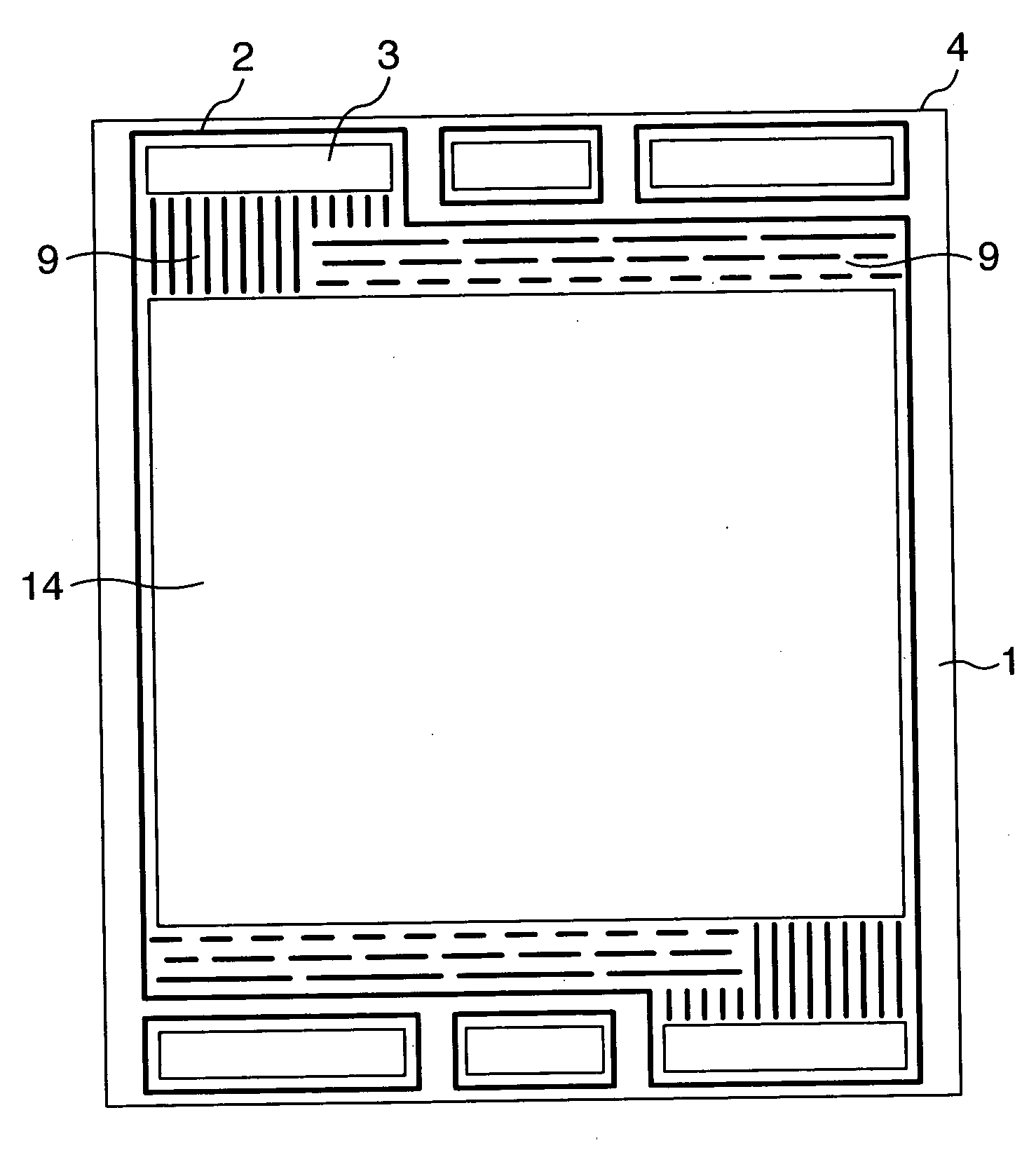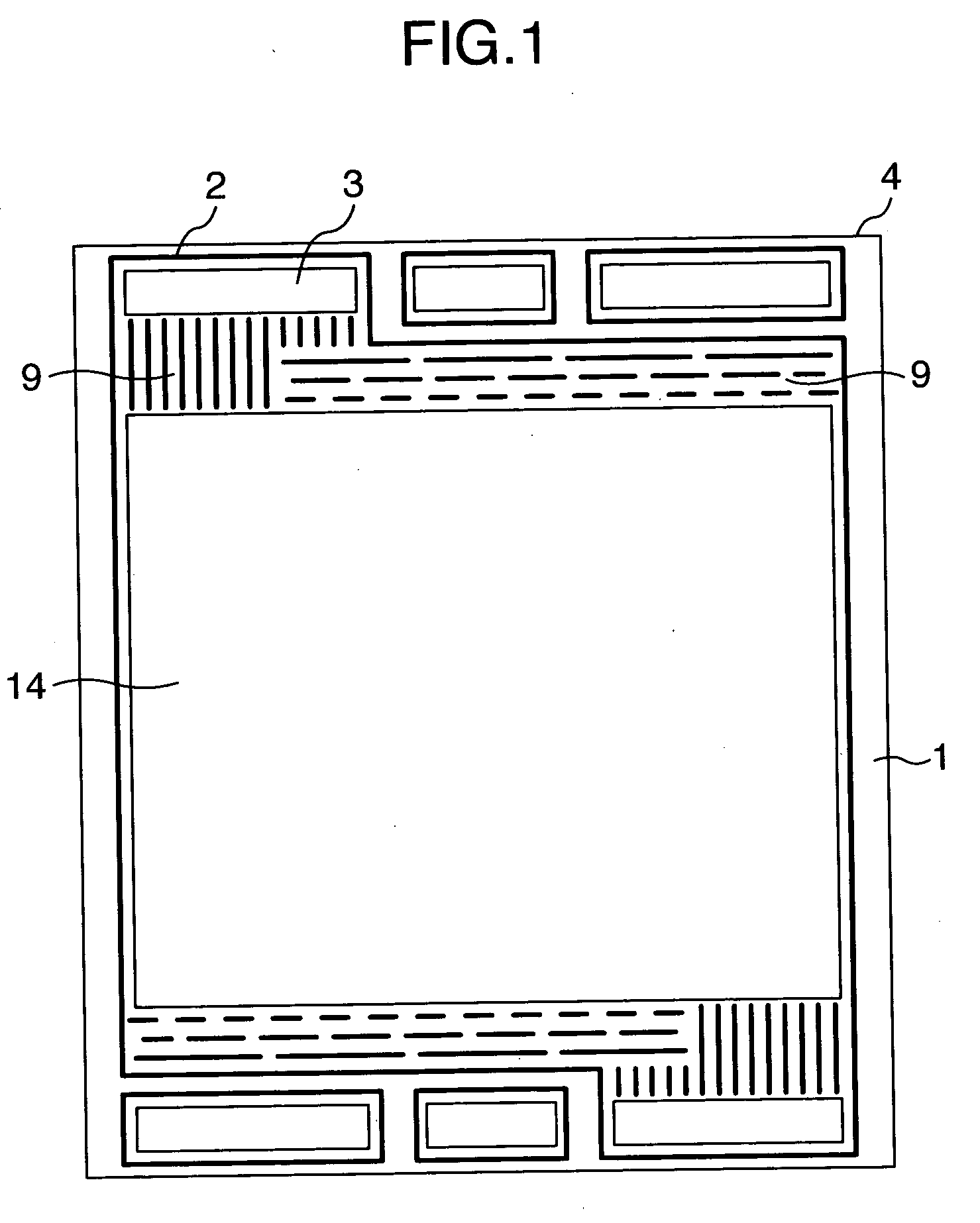Separator for fuel cell and fuel cell using it
a fuel cell and separator technology, applied in the field of separators, can solve the problems of degrading cell performance, corroding immediately, iron ion elution, etc., and achieve the effects of increasing the pressure of the reaction gas supplied, good sealing characteristic, and sufficient sealing characteristi
- Summary
- Abstract
- Description
- Claims
- Application Information
AI Technical Summary
Benefits of technology
Problems solved by technology
Method used
Image
Examples
embodiment 1
[0029] A varnish of an ethylene propylene diene monomer rubber (EPDM) was formed by a screen printing process on a resinous frame member 1 formed of a plate of polyphenylene sulfide (PPS) which was formed by a punching into a predetermined contour with a manifold 3 and a bore made for an electrode surface and which had a thickness of 0.2 mm. Then, the varnish was baked at a temperature of 150° C. in an air atmosphere to form a sealing material 2. The sealing material 2 forms a sidewall portion of a gas channel 9 for introducing a gas required for an electrochemical reaction from the manifold 3 to an electrode surface of a fuel cell. A sealing frame 4 is formed by the resinous frame member 1 and the sealing material 2. FIG. 1 is a plan view of the sealing frame. Reference numeral 14 in Figures denotes a perforation opened in the electrode surface. The sealing material has a height of 0.25 mm as formed, and EPDM has a rubber hardness of 60 degree. The rubber hardness is a value based ...
embodiment 2
[0031] A separator in the embodiment 2 was produced in the same manner as in the embodiment 1, except that titanium was clad on opposite surfaces of a stainless steel (SUS316) to form a metallic pressed plate having a three-layer structure and a thickness of 0.2 mm.
embodiment 3
[0032] A separator in the embodiment 3 was produced using the same metallic pressed plate as in the embodiment 2 and using a sealing frame-producing process different from that in the embodiment 1. The sealing frame-producing process is as follows: An EPDM varnish was formed by a screen printing process on a PPS plate formed at a thickness of 0.2 mm into a predetermined contour by a punching, and then baked at 150° C. in an air atmosphere. Thereafter, a second printing was conducted with the screen plate replaced by new one, and the baking at 150° C. in an air atmosphere was conducted again. A plan view of a sealing frame produced is shown in FIG. 2A, and a sectional view taken along a line IIB-IIB in FIG. 2A is shown in FIG. 2B. A sealing material 2 has a height of 0.23 mm at a portion 5 formed by the first printing, and a height of 0.26 mm at a portion 6 formed by the second printing, because the portion 6 was piled on the portion formed by the first printing. The sealing frame ha...
PUM
| Property | Measurement | Unit |
|---|---|---|
| thickness | aaaaa | aaaaa |
| thickness | aaaaa | aaaaa |
| temperature | aaaaa | aaaaa |
Abstract
Description
Claims
Application Information
 Login to View More
Login to View More - R&D
- Intellectual Property
- Life Sciences
- Materials
- Tech Scout
- Unparalleled Data Quality
- Higher Quality Content
- 60% Fewer Hallucinations
Browse by: Latest US Patents, China's latest patents, Technical Efficacy Thesaurus, Application Domain, Technology Topic, Popular Technical Reports.
© 2025 PatSnap. All rights reserved.Legal|Privacy policy|Modern Slavery Act Transparency Statement|Sitemap|About US| Contact US: help@patsnap.com



